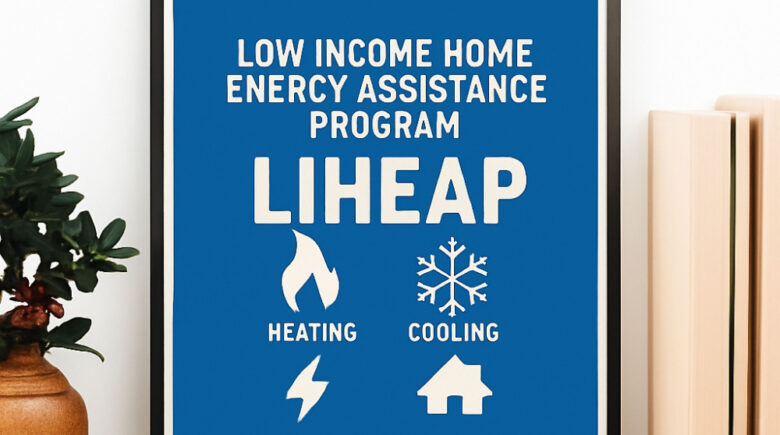Table of Contents
The Low-Income Home Energy Assistance Program (LIHEAP) is a federally funded initiative designed to help eligible households manage the costs of home energy. By offering direct bill payment assistance, crisis intervention, and weatherization services, LIHEAP ensures that low-income families can maintain safe indoor temperatures year-round. Administered through the U.S. Department of Health and Human Services (HHS) and delivered at the state and local levels, the program addresses both immediate heating and cooling needs and longer-term energy efficiency improvements hmrf.acf.hhs.gov.
Purpose and Scope of LIHEAP
LIHEAP’s primary objective is to assist households with the greatest needs—particularly those with incomes at or below 150 percent of the federal poverty level or 60 percent of state median income—who spend a disproportionate share of their resources on energy. The program supports:
- Home energy bill payments: One-time grants to offset heating or cooling costs.
- Energy crisis assistance: Emergency grants to prevent utility shutoffs or restore service.
- Weatherization and minor repairs: Funding for measures that improve energy efficiency and reduce future energy burdens hmrf.acf.hhs.gov.
By tackling both immediate expenses and structural inefficiencies, LIHEAP helps prevent health and safety hazards associated with inadequate heating or cooling, mitigating risks such as hypothermia, heat stroke, and indoor air quality deterioration hmrf.acf.hhs.gov.
Eligibility Criteria and Income Guidelines
Eligibility for LIHEAP is determined by several factors, including household income, energy costs relative to income, and responsibility for utility payments. Key requirements typically include:
- Income threshold: Households must generally earn no more than 150 percent of the federal poverty guideline or 60 percent of the state’s median income, whichever is higher.
- Energy burden: Priority is given to households that pay over half of their income toward energy expenses.
- Citizenship and residency: Applicants must be U.S. citizens or qualified non-citizens, with proof of residence in the service area.
- Responsibility for energy costs: Applicants must demonstrate direct responsibility for home energy bills govfacts.org.
Some states offer automatic qualification for households receiving other means-tested benefits, such as Supplemental Nutrition Assistance Program (SNAP) or Temporary Assistance for Needy Families (TANF). Applicants should consult local LIHEAP offices or the national clearinghouse to verify specific eligibility requirements in their state disasterassistance.gov.
Types of Assistance Offered Under LIHEAP
LIHEAP administers three principal categories of aid, each catering to different aspects of energy relief:
- Regular Bill Payment Assistance
Funds are disbursed directly to energy providers on behalf of eligible households. Payment amounts vary by state, household size, income level, and local energy costs. - Crisis Intervention
Targeted assistance for emergency situations—such as imminent fuel shutoff, broken heating systems, or extreme weather events—that threaten household health and safety. - Weatherization and Energy-Related Home Repair
Grants cover measures like insulation, air sealing, furnace repair, and installation of energy-efficient appliances to reduce long-term energy expenditures. Many states leverage LIHEAP funds alongside the Weatherization Assistance Program (WAP) to maximize impact peerta.acf.hhs.gov.
While all states participate in core bill payment and crisis assistance, availability of weatherization services varies. Applicants should inquire with their local LIHEAP office about bundled services and partnerships that enhance energy efficiency outcomes.
Application Process and Required Documentation
Applying for LIHEAP typically involves the following steps:
- Locate the Local LIHEAP Office
Applicants can find contact information through the LIHEAP Clearinghouse or state HHS websites. Most states maintain toll-free hotlines and online portals for application submission. - Complete an Application Form
Forms may be available online, by mail, or in person at authorized community service agencies. Key information includes household composition, income verification, and energy cost documentation. - Gather Supporting Documentation
Commonly required materials include:- Proof of income (pay stubs, tax returns, benefit statements)
- Utility bills or vendor statements showing current energy costs
- Identification and Social Security numbers for all household members
- Submit Application and Await Determination
State agencies generally process applications within 30 days, though crisis cases may receive expedited review. Applicants are notified of benefit amounts, payment schedules, and any follow-up requirements govfacts.org.
Turnaround times and documentation requirements can differ by jurisdiction. Early application—especially before peak heating and cooling seasons—can help ensure timely assistance.
State-Level Administration and Variations
Although LIHEAP is federally funded, each state, territory, and tribal government administers its own program, resulting in variations in:
- Benefit amounts: Ranges can span from several hundred to over a thousand dollars per season.
- Application deadlines: Many states set seasonal windows, while others accept rolling applications year-round.
- Service offerings: Some jurisdictions integrate weatherization through cross-program partnerships, whereas others focus solely on bill assistance.
The LIHEAP Clearinghouse offers a searchable directory of state contacts and policy details. Applicants should consult this resource to understand local program nuances and any supplemental funding streams, such as Emergency Crisis Intervention Program (ECIP) allocations or state-funded supplements stage.liheapch.acf.hhs.gov.
Maximizing Benefits and Engagement
To enhance the likelihood of approval and optimize the impact of LIHEAP benefits, applicants are encouraged to:
- Apply Early: Submit applications before peak demand periods to avoid funding shortfalls.
- Maintain Comprehensive Records: Keep copies of all submitted documents and bills to streamline future applications.
- Explore Complementary Programs: Investigate weatherization grants, energy-efficiency rebates, and other utility-led assistance for further cost reductions.
- Engage Local Agencies: Community action agencies often provide case management, crisis counseling, and referrals to related social services.
By adopting a proactive and informed approach, households can not only secure immediate relief but also achieve sustainable reductions in energy expenditures.
Conclusion
LIHEAP serves as a cornerstone in the nation’s safety net, offering critical support for heating, cooling, and energy-efficiency needs among low-income families. Through a combination of direct bill assistance, emergency crisis grants, and weatherization services, the program addresses both short-term emergencies and long-term structural improvements. Prospective applicants should review eligibility criteria, prepare necessary documentation, and apply through local LIHEAP offices to secure vital relief. Leveraging this resource effectively can mitigate energy burdens, protect household health, and foster economic stability.
References
- U.S. Department of Health and Human Services, Office of Community Services. Low Income Home Energy Assistance Program (LIHEAP). hmrf.acf.hhs.gov
- U.S. Department of Health and Human Services, Office of Community Services. LIHEAP Fact Sheet. hmrf.acf.hhs.gov
- GovFacts. A Guide to Applying for Heating and Cooling Assistance via LIHEAP. govfacts.org
- U.S. Department of Health and Human Services. LIHEAP Clearinghouse – About the Clearinghouse. stage.liheapch.acf.hhs.gov
Table of Contents
The Low-Income Home Energy Assistance Program (LIHEAP) is a federally funded initiative designed to help eligible households manage the costs of home energy. By offering direct bill payment assistance, crisis intervention, and weatherization services, LIHEAP ensures that low-income families can maintain safe indoor temperatures year-round. Administered through the U.S. Department of Health and Human Services (HHS) and delivered at the state and local levels, the program addresses both immediate heating and cooling needs and longer-term energy efficiency improvements hmrf.acf.hhs.gov.
Purpose and Scope of LIHEAP
LIHEAP’s primary objective is to assist households with the greatest needs—particularly those with incomes at or below 150 percent of the federal poverty level or 60 percent of state median income—who spend a disproportionate share of their resources on energy. The program supports:
- Home energy bill payments: One-time grants to offset heating or cooling costs.
- Energy crisis assistance: Emergency grants to prevent utility shutoffs or restore service.
- Weatherization and minor repairs: Funding for measures that improve energy efficiency and reduce future energy burdens hmrf.acf.hhs.gov.
By tackling both immediate expenses and structural inefficiencies, LIHEAP helps prevent health and safety hazards associated with inadequate heating or cooling, mitigating risks such as hypothermia, heat stroke, and indoor air quality deterioration hmrf.acf.hhs.gov.
Eligibility Criteria and Income Guidelines
Eligibility for LIHEAP is determined by several factors, including household income, energy costs relative to income, and responsibility for utility payments. Key requirements typically include:
- Income threshold: Households must generally earn no more than 150 percent of the federal poverty guideline or 60 percent of the state’s median income, whichever is higher.
- Energy burden: Priority is given to households that pay over half of their income toward energy expenses.
- Citizenship and residency: Applicants must be U.S. citizens or qualified non-citizens, with proof of residence in the service area.
- Responsibility for energy costs: Applicants must demonstrate direct responsibility for home energy bills govfacts.org.
Some states offer automatic qualification for households receiving other means-tested benefits, such as Supplemental Nutrition Assistance Program (SNAP) or Temporary Assistance for Needy Families (TANF). Applicants should consult local LIHEAP offices or the national clearinghouse to verify specific eligibility requirements in their state disasterassistance.gov.
Types of Assistance Offered Under LIHEAP
LIHEAP administers three principal categories of aid, each catering to different aspects of energy relief:
- Regular Bill Payment Assistance
Funds are disbursed directly to energy providers on behalf of eligible households. Payment amounts vary by state, household size, income level, and local energy costs. - Crisis Intervention
Targeted assistance for emergency situations—such as imminent fuel shutoff, broken heating systems, or extreme weather events—that threaten household health and safety. - Weatherization and Energy-Related Home Repair
Grants cover measures like insulation, air sealing, furnace repair, and installation of energy-efficient appliances to reduce long-term energy expenditures. Many states leverage LIHEAP funds alongside the Weatherization Assistance Program (WAP) to maximize impact peerta.acf.hhs.gov.
While all states participate in core bill payment and crisis assistance, availability of weatherization services varies. Applicants should inquire with their local LIHEAP office about bundled services and partnerships that enhance energy efficiency outcomes.
Application Process and Required Documentation
Applying for LIHEAP typically involves the following steps:
- Locate the Local LIHEAP Office
Applicants can find contact information through the LIHEAP Clearinghouse or state HHS websites. Most states maintain toll-free hotlines and online portals for application submission. - Complete an Application Form
Forms may be available online, by mail, or in person at authorized community service agencies. Key information includes household composition, income verification, and energy cost documentation. - Gather Supporting Documentation
Commonly required materials include:- Proof of income (pay stubs, tax returns, benefit statements)
- Utility bills or vendor statements showing current energy costs
- Identification and Social Security numbers for all household members
- Submit Application and Await Determination
State agencies generally process applications within 30 days, though crisis cases may receive expedited review. Applicants are notified of benefit amounts, payment schedules, and any follow-up requirements govfacts.org.
Turnaround times and documentation requirements can differ by jurisdiction. Early application—especially before peak heating and cooling seasons—can help ensure timely assistance.
State-Level Administration and Variations
Although LIHEAP is federally funded, each state, territory, and tribal government administers its own program, resulting in variations in:
- Benefit amounts: Ranges can span from several hundred to over a thousand dollars per season.
- Application deadlines: Many states set seasonal windows, while others accept rolling applications year-round.
- Service offerings: Some jurisdictions integrate weatherization through cross-program partnerships, whereas others focus solely on bill assistance.
The LIHEAP Clearinghouse offers a searchable directory of state contacts and policy details. Applicants should consult this resource to understand local program nuances and any supplemental funding streams, such as Emergency Crisis Intervention Program (ECIP) allocations or state-funded supplements stage.liheapch.acf.hhs.gov.
Maximizing Benefits and Engagement
To enhance the likelihood of approval and optimize the impact of LIHEAP benefits, applicants are encouraged to:
- Apply Early: Submit applications before peak demand periods to avoid funding shortfalls.
- Maintain Comprehensive Records: Keep copies of all submitted documents and bills to streamline future applications.
- Explore Complementary Programs: Investigate weatherization grants, energy-efficiency rebates, and other utility-led assistance for further cost reductions.
- Engage Local Agencies: Community action agencies often provide case management, crisis counseling, and referrals to related social services.
By adopting a proactive and informed approach, households can not only secure immediate relief but also achieve sustainable reductions in energy expenditures.
Conclusion
LIHEAP serves as a cornerstone in the nation’s safety net, offering critical support for heating, cooling, and energy-efficiency needs among low-income families. Through a combination of direct bill assistance, emergency crisis grants, and weatherization services, the program addresses both short-term emergencies and long-term structural improvements. Prospective applicants should review eligibility criteria, prepare necessary documentation, and apply through local LIHEAP offices to secure vital relief. Leveraging this resource effectively can mitigate energy burdens, protect household health, and foster economic stability.
References
- U.S. Department of Health and Human Services, Office of Community Services. Low Income Home Energy Assistance Program (LIHEAP). hmrf.acf.hhs.gov
- U.S. Department of Health and Human Services, Office of Community Services. LIHEAP Fact Sheet. hmrf.acf.hhs.gov
- GovFacts. A Guide to Applying for Heating and Cooling Assistance via LIHEAP. govfacts.org
- U.S. Department of Health and Human Services. LIHEAP Clearinghouse – About the Clearinghouse. stage.liheapch.acf.hhs.gov







